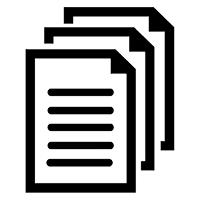Analytics is a term that has become popular because of its use in sports.
The book and movie “Moneyball” helped to popularize the term – but not necessarily the actual practice.

Analytics as a practice requires “studying past historical data to research potential trends, to analyze the effects of certain decisions or events, or to evaluate the performance of a given tool or scenario.”
In the medical world the term has become extremely popular as a way to maximize cost efficiency, particularly in the area of medical supplies which are a very large part of overall expense.
Unfortunately, for most long term care facilities, true analytic evaluation of use and cost may simply not be possible.
Why not?
Usable analyses require that the data have to be:
1. Accurate
2. Must describe a cause and effect (in other words,)
3. A way to not just control costs but also to insure that income more than covers them
The major culprits in the inability to applying an analytics-based approach (above and beyond the cost of a sophisticated tool) are:

1. Inaccurate inventories
2. Taking the “easy way out” and just ordering supplies
and dispensing them “when needed” instead of having costs related directly
TO WHOM they were dispensed
3. Separate systems for inventory control, ordering and billing requiring manual inputs from one to the next
It’s not a lack of work or diligence that causes this situation.
Each separate area – purchasing which buys the supplies, nursing which dispenses them, operations that inventories them and billing which charges for them all operates on their own “island,” with minimal interaction.
There doesn’t seem to be a way to get all the systems integrated unless you are a mega-company. Even huge enterprises are trapped because the firm doing the integration has a monopoly on selling supplies.
Integration can be a heavy cost for any size organization, plus the setup requires a major amount of time, which usually delays implementation and causes even more stress. Businesses under a certain size can’t even get the “you buy from us if you want integration” deal.
So, what’s to be done?

The first thing that has to be done is to recognize that the center of the process is the resident. Each resident consumes supplies of all types and it is imperative to recognize that the point of use, the resident, should be the focus of all systems.
Why is the resident the key to developing analytics? Simply put, the resident is the element that generates payment from one to multiple sources. They are also consumer of supplies, so it makes sense to use their ID number for tracking all that they consume.
The process begins with the issuance of case number for each new resident. Once that number is assigned, all supplies, from initial items to regular use to special requirements should be assigned to it.
The charge for space, nursing and administration is based on each resident. If there is a way for the costs tor medical supplies to also be allocated to that person it allows the opportunity for more accurate inventory control as well as billing.

But, each group:
operations/central supply/inventory control
ordering, nursing and billing
must interact in order for that increased accuracy to occur.
IF they do, then nursing has the right items to dispense;
central supply inventory is maintained correctly;
ordering is more precise;
costs accrued as dispensing/usage occurs and billing will reflect appropriate costs.
The results would allow for all staff to have less stress, allow the ability to conduct analytics correctly to optimize ROI, and – most importantly – provide higher level of care for residents.
AdminiCare by InBeam Tech is a sophisticated, affordable medical supplies inventory system that allows for easy, accurate and complete integration with ordering, supply and billing for residential care facilities.


